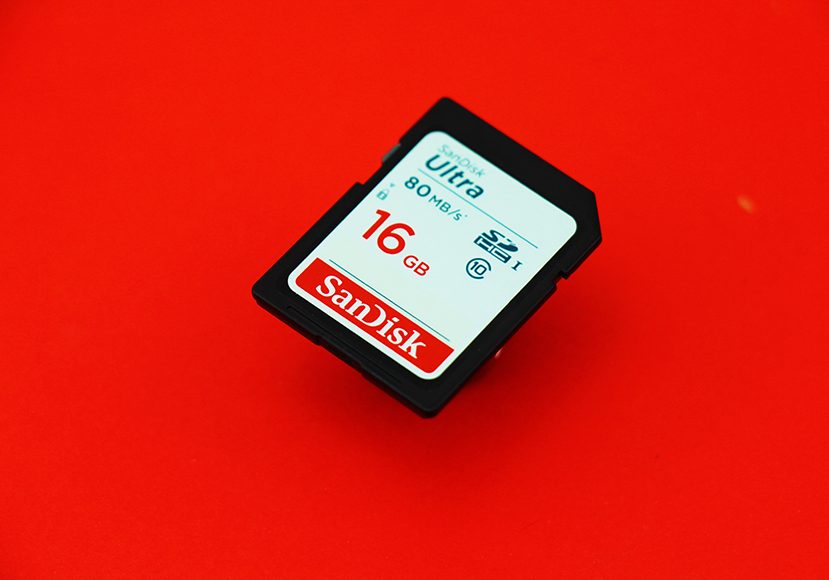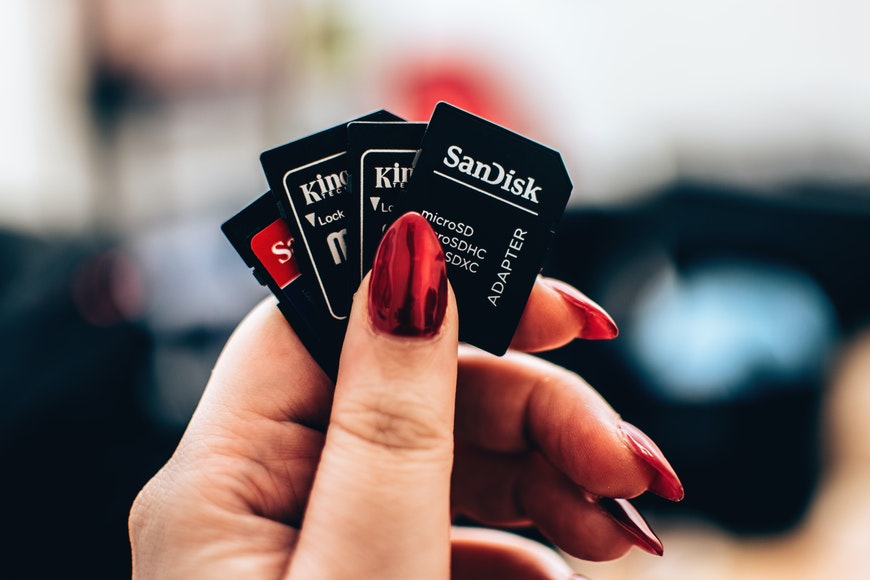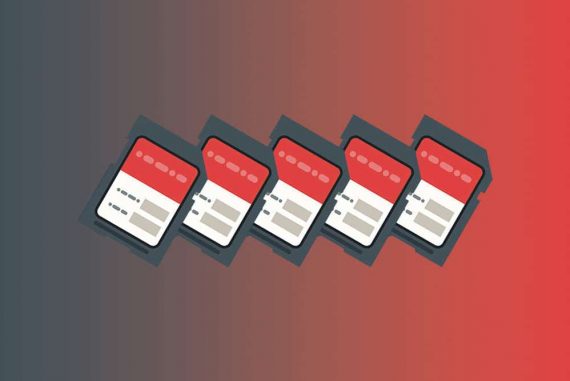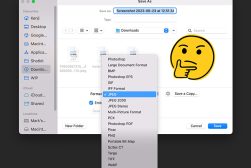
How Many Pictures Can 16GB Hold? (Memory Card Capacity)
Calculating how many pictures 16GB can hold depends on several factors. First, let's look at some specific examples of 16GB memory card usage.
Calculating how many pictures 16GB can hold depends on several factors, which we’ll explain in this guide.
We’ve already discussed how many pictures can 8BG hold, so 16GB memory cards are the next step up in terms of capacity.
First, let’s look at some specific examples of 16GB memory card usage.
How Many Pictures Can 16GB Hold?

16GB Card in a Camera (DSLR, Mirrorless, etc.)
Start by learning the file size of the images produced by your camera. Let’s say the raw format files are about 35.6 MB, and the JPGs are 5.6MB. This means that a 16GB memory card holds 449 raw files or 2857 JPG files.
This example represents the RAW format files and L/Normal JPGs from a Canon EOS 90D. You’ll learn later in the article how to calculate it for your camera.
16GB Card in a Mobile Phone
The pictures were taken with an iPhone, ranging the 1.8MB to 2.2MB. So, if you use a 16GB card on this phone, you’ll be able to hold between 8,888 and 7272 photos. This is how many photos can 16gb hold given the average file sizes of photos.
To figure out how to calculate the number of photos you could take with your phone, you’ll need to know the resolution and apply the calculations as explained in the last section of this article.
16GB Card in a GoPro
A GoPro takes photos that occupy between 3.4 MB and 5.2 MB. This means that you can hold between 4705 and 3076 pictures on a 16GB memory card.
This can change depending on the version of GoPro that you use.
Table to Show How Many Pictures Can 16GB Hold
Here’s a table showing approximate estimations of how many photos can be stored on a 16GB device, based on different image sizes and file formats (raw format and JPEG format).
Please note that these are rough estimates, and actual storage capacity may vary depending on various factors like compression, image complexity, and metadata.
| Image Resolution | File Format | Average File Size (MB) | Approximate Number of Pictures |
|---|---|---|---|
| 12 MP | JPEG | 4-5 | 3,200 – 4,000 |
| 20 MP | JPEG | 6-8 | 2,000 – 2,666 |
| 24 MP | JPEG | 8-10 | 1,600 – 2,000 |
| 36 MP | JPEG | 12-15 | 1,066 – 1,333 |
| 12 MP | RAW | 20-25 | 640 – 800 |
| 20 MP | RAW | 30-35 | 457 – 533 |
| 24 MP | RAW | 35-40 | 400 – 457 |
| 36 MP | RAW | 50-60 | 266 – 320 |
The only real way to find out how many images can be stored on your 16GB card is to use it in the intended device, taking photos and videos as you normally would.
How to Calculate How Many Pictures 16GB Can Hold
Considering that one GB (gigabytes) is one thousand MB (megabytes), all you have to do to calculate how many pictures a 16GB can hold is divide 16000 MB by the MB of the picture your camera produces.
In other words, if your camera takes photos that are 30MB, simply divide 16000/30. This means that a 16GB card can hold 533 pictures from your camera. How many pictures can a 16GB SD card hold depends highly on the types of photos taken.
Side note – if you are shooting multiple photos of 30MB each, you’ll need the fastest card to process the images quickly. This is also true if you’re shooting 4k video – see our article on SanDisk Ultra vs Extreme.
What factors influence how many photos can be stored on a 16GB memory card?
Several factors influence the number of photos that can be stored on a 16GB memory card:
- Image File Size: The size of each individual image file plays a significant role in determining how many photos can be stored. Larger file sizes, such as those produced by high-resolution images or images with less compression, occupy more storage space. Smaller file sizes, on the other hand, allow for more photos to be stored on the memory card.
- Image Resolution: The resolution of the images affects the file size and, consequently, the number of photos that can be stored. Higher-resolution images, such as those captured with cameras boasting more megapixels, tend to result in larger file sizes. Lower-resolution images consume less storage space, allowing for more photos to be stored on the memory card.
- Image Compression: Different file formats and compression levels can impact image file sizes. Certain file formats, like JPEG, use compression algorithms to reduce file sizes while maintaining acceptable image quality. Higher levels of compression generally result in smaller file sizes, enabling more photos to be stored. However, excessive compression can degrade image quality.
- File Format: The file format in which images are saved can affect their sizes. For example, RAW files typically have larger sizes compared to JPEG files. RAW files contain more data and offer greater flexibility for post-processing, but they occupy more storage space. Opting for JPEG format can help conserve storage space and store more photos on the memory card.
- Camera Settings: Camera settings such as burst mode, exposure bracketing, or capturing in RAW+JPEG can influence the number of photos that can be stored. Burst mode, which captures multiple images in rapid succession, will consume more storage space. Similarly, shooting in RAW+JPEG will result in larger file sizes as it saves both file formats simultaneously.
- Other Data on the Memory Card: It’s important to consider that memory cards may have other data already stored on them, such as system files or existing photos. These occupied spaces reduce the available storage capacity for new photos.
- Miscellaneous Factors: Metadata, including embedded information like EXIF data and keywords, can slightly increase the size of each image file. Additionally, some memory cards reserve a small portion of their capacity for formatting and file system overhead, further reducing the available space.
All these factors combined can influence affects the actual number of photos that can be stored on a 16GB memory card.
How can you maximise how many photos 16GB can hold?
The specific number of photos that can be stored on a 16GB memory card depends on various factors like image resolution, file format, compression settings, and the complexity of the images.
Applying the strategies below can help optimize storage capacity, but it’s crucial to balance them with your desired image quality and shooting requirements:
- Adjust Image Resolution: Lowering the resolution of the images reduces their file sizes, allowing more photos to fit within the limited storage space. However, keep in mind that lower resolution also means sacrificing some image detail and potential print quality.
- Optimize Image Compression: Choose an appropriate compression level when saving images, especially if shooting in JPEG format. Balancing compression settings can help reduce file sizes without significantly compromising image quality. Experiment with different compression levels to find the optimal balance.
- Shoot in JPEG Format: JPEG files generally have smaller sizes compared to RAW files. Shooting in JPEG format can help conserve storage space, allowing for more photos to be stored on the memory card. However, this format sacrifices some flexibility for post-processing compared to RAW.
- Avoid Unnecessary Burst Mode: Burst mode captures a series of images in quick succession, which can rapidly consume storage space. Use burst mode selectively when needed and avoid excessive continuous shooting unless necessary.
- Regularly Transfer and Backup Photos: Transferring photos from the memory card to a separate storage device or computer frees up space on the memory card. Regularly backing up your photos ensures you have enough space available for capturing new images.
- Delete Unwanted Photos: Periodically review and delete unwanted or duplicate photos directly from the memory card. Be cautious when deleting and ensure you have properly backed up your photos before removing them from the memory card.
- Use External Storage or Multiple Memory Cards: Consider using external storage options, such as portable hard drives or cloud-based solutions, to offload photos from the memory card. Alternatively, carrying additional memory cards allows you to swap them out and continue capturing photos when one becomes full.
- Avoid Recording Videos: If the primary purpose is photography, refrain from recording videos on the same memory card. Videos typically require significantly more storage space than photos, which reduces the available capacity for images.
- Minimize Non-essential Data: Keep the memory card dedicated primarily to storing photos. Avoid cluttering the card with non-essential data, such as unnecessary apps, music, or other files.
Should you use a 16GB memory card? (As opposed to larger sizes)
Ultimately, it’s a balance between your storage needs, budget, and the convenience of managing files. If a 16GB card fulfils your requirements and offers adequate storage capacity for your intended usage, it can be a practical choice.
However, if you anticipate higher storage demands or prefer the convenience of more extensive storage, opting for larger-capacity memory cards may be a better long-term investment.
Some other factors to consider include:
- Storage Requirements: Assess your storage needs. If you frequently capture high-resolution photos, record lengthy videos, or require extensive data storage, a larger capacity memory card may be more suitable.
- File Formats: Different file formats and their associated sizes impact storage requirements. If you shoot in RAW format or prefer higher-quality video recording, larger capacity cards are recommended.
- Convenience vs. Cost: A 16GB card is more affordable than higher-capacity options. If you don’t need extensive storage and frequently transfer files, a 16GB card may provide sufficient convenience at a lower cost.
- Device Compatibility: Ensure your device supports a 16GB memory card. Some devices, especially newer models, may require larger capacity cards or have limitations on the maximum supported size.
- Flexibility: A larger capacity card allows you to store more data without frequently managing or transferring files. This is beneficial when you’re traveling or in situations where frequent access to a computer or other storage options may not be available.
What is an average JPEG image size?
The average size of a JPEG image can vary depending on factors such as resolution, compression level, and image content, but a typical range for a high-quality JPEG image is between 3 to 6 megabytes (MB). However, it’s important to note that JPEG file sizes can be smaller or larger depending on the specific image characteristics and settings used during compression.
What is an average RAW image size?
The average size of a RAW image can vary significantly depending on factors such as camera model, resolution, and image complexity. On average, a RAW image can range from 20 to 30 megabytes (MB), although larger sizes are possible for higher-resolution cameras or images with greater detail and color depth.
How to Check How Many Photos 16GB Can Hold on a Camera
If you don’t know how big are your images, you can always use your camera to determine how many pictures a 16GB card can hold.
Insert an empty (new or formatted) 16GB memory card into the camera. Now, look at the LCD screen to see how many photos are left – that’s the total number of images that you can fit in a 16GB card using those settings on your camera.
If you change the size or format of the images in the camera menu, you’ll see that the number of images remaining is different. That’s how many photos a 16GB card would hold with these new settings.
How to calculate memory card usage with a computer
Using your computer is a more precise way to calculate the number of pictures you can hold on a 16GB memory card.
Start by connecting the card to the computer using a fast memory card reader or the computer’s card slot – if it has one. Then, look at the information on the card and see how much space is available. You’ll notice that the space is less than 16GB, even if it’s empty because the formatting takes some of the space.
Now, unplug the card and take some pictures. Make them very different, some solid colors and others with lots of detail – this way, you’ll have a wide range to make an average.
Connect the card to the computer again and see the file size of your photos. Now, divide the first number you got from the empty card by the average size of an image from your camera.
The result will be the number of photos you can hold on a 16GB card. If you’re interested in investing in a bigger capacity card, check our article on how many photos a 128GB card can hold.













